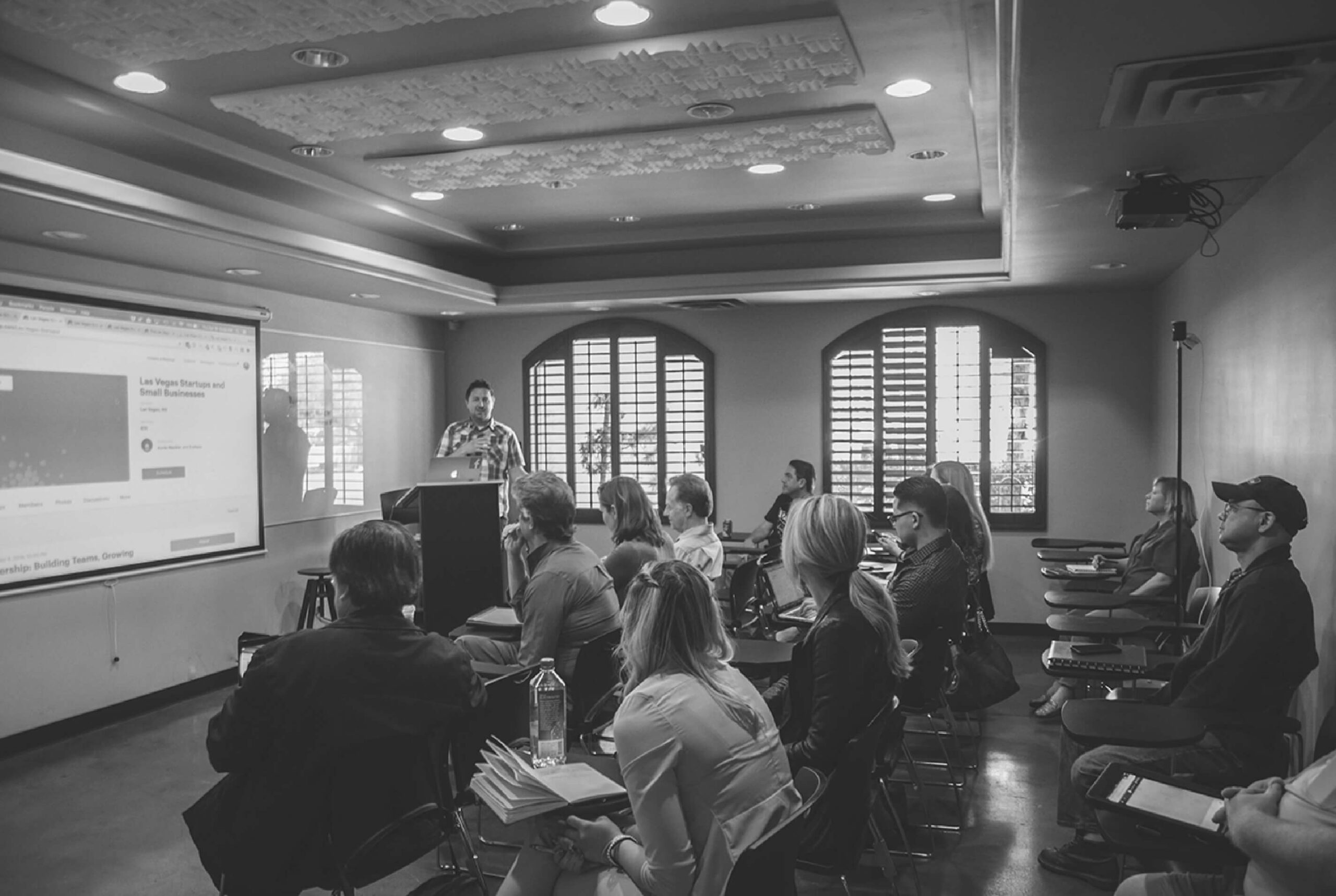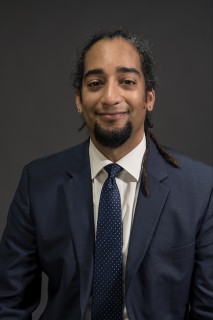1. What is your current role/title?
I currently serve as Associate Dean of Instruction at Harold Washington College. While I support the general instructional operations of our college, I directly support tutoring, dual credit and dual enrollment, first year experience courses, developmental education, and community outreach. I started my career as a middle school social studies and science teacher and moved into pre-service teacher education after five years in the classroom. While the Associate Dean appointment was not necessarily in my career trajectory, I am grateful to be in a position where I can introduce and support racial equity initiatives that, we hope, lead to less harmful conditions for our students.
2. Where did you earn your degree(s)? Types of degree(s) and field(s) of study?
I hold a Ph.D. in Curriculum and Instruction from the University of Illinois at Chicago. My research looks at the intersections of race, place, and pedagogy. I am very interested in exploring how race, class, and gender impact schooling, education, curriculum, and instruction. I also hold a M.Ed. in Educational Studies and B.A. in Elementary Education.
3. How did your college/university support your success in earning your degree(s)?
When I was hired as the Dean of Instruction, my colleagues at Harold Washington were instrumental in supporting me through my journey to complete my doctorate. They offered me the support and encouragement I needed to maintain my work responsibilities and write my dissertation. I was also fortunate enough to be supported financially by my institution through their tuition reimbursement program.
4. What excites you about equity work at your institution?
Before he died, Tupac (2009) wrote a poem titled “Roses in the Concrete.” The rapper (2009) ends the poem with “long live the rose that grew through the crack in the concrete when no one else even cared” (p. 3). For me, Tupac highlighted two equity-based claims:
On the one hand, that the roses are roses—our students come into our schools with many assets. Tara Yosso (2005) argues that all students bring in a variety of assets, what she calls “community and cultural wealth”, into schools that often go under-utilized. In my opinion, part of our work in moving towards more equitable outcomes for students is recognizing, utilizing, and sustaining interactions with students that are rooted in their strengths. From this positionality we view the roses as just that…roses.
Additionally, this positionality may support a shift in our equity analyses away from individualized ones that blame students for their academic failure towards the institutional structures and processes that create the conditions that our students participate in—the concrete. For me, it is imperative that we center our attention on fracturing the concrete conditions in our schools that create barriers and harmful conditions for our students, especially those that have been historically marginalized by our schools.
I am happy to hear that so many institutions are working to better define equity on their campuses and developing initiatives that meet said visions. I am, however, cautious, to congratulate these initiatives as they often-times paint a deficit picture of our students while avoiding interrogation of the structures and processes of our schools that may be creating inequities. I encourage schools attempting to engage their campus communities in creating more equitable outcomes for their students to continue to develop support systems for students but to be more reflective, turning the mirror towards the concrete conditions that our students may not find the cracks in.
5. In your role, how do you impact equitable outcomes for your students?
While I think I’ve impacted a number of equitable outcomes for our students, I’ll highlight two initiatives here.
Discover
The first is our Discover course. As chair of the Department of Interdisciplinary Studies, where our “college success courses” live, I have led the over-haul of our course offerings. After spending time with our students, I realized that unfortunately, community colleges remain a “second option” for many of them. For a variety of reasons, (counselors, cost of attendance, societal stigma, school evaluations, family, etc.), many students feel as if their attendance at Harold Washington College is secondary, less than, to attending a four-year university. On top of that, our placement test places most of our students into remedial courses. These two experiences/structures may have a negative impact on how our students see themselves and their sense of belonging. I, in collaboration with our wellness center and faculty, set out to create a course for our developmental education students that could cultivate their hope, what Paolo Freire (1970) defines as agency—seeing ourselves as capable—and navigation—navigating complexities when they arise. Discover is a one-credit hour, trauma-informed, healing-centered course that all of our developmental English students currently take.
Data reported by students before Discover (start of semester survey) indicated that Discover students are dealing with a great deal of stress while attending college. This data also suggested that they struggled to navigate the complexities of life and school. Data reported by students at the conclusion of Discover (end of semester survey) indicates that a) the classroom environment was constructed and maintained to support students hope (Freire, 1970); b) Discover supported students’ self-recognition of their confidence (agency); c) Discover helped students connect to themselves, their classmates, and the college (personnel and resources); d) Discover helped students better navigate complexities (stress) in and out of school; and e) students hoped for elements of Discover to be included in other classes/areas of the college.
Research shows that when students feel more confident in themselves, feel like they belong, and have a support system in and out of school, they perform better. Discover is creating that sense of confidence, belonging, and collaboration needed to support our students’ success while also creating the space for them to name their pain, connect their pain to others to see that they are not alone, and develop tools in their toolbox to move beyond, and start healing, from their pain. It is our hope that Discover no longer exists one day. It is our hope that asset-based, healing-centered praxis of Discover is embedded into every area, (every inch of the concrete) and process of our college.
Collective Care for the Care-Givers
While institutions may be getting better at supporting the holistic needs of our students, in my opinion, we still have not considered the conditions that better support the care givers—those of us charged with supporting our students’ success. If our students have pain, we do, too!
Roughly two years ago, I invited faculty, staff, and administrators working with developmental education students to start attending bi-weekly meetings to better understand what asset-based pedagogies were and how they might support our interactions with our students. We called this committee T.E.A.M. (Transitional Education through Affective Methodologies). Approximately 19 people attended each of our meetings. After spending nearly a year together our work took a turn. It was the end of the spring semester and, as we always did, we opened up our meeting with check-ins—a ritual where every individual in the space could share their personal reflections related to how they were feeling physically, intellectually, emotionally, and share any needs they hoped the group could provide. During this particular check-in, almost every T.E.A.M. member shared a story of exhaustion, pain, and burn-out. We knew that we had to turn our gaze away from the students and towards ourselves. We knew that we could not survive under the existing conditions that were burning us all out.
For one year, about twelve of the original 19 members dedicated two-hours every other week, to T.E.A.M. During our time together we focused on three areas related to collective care: breaking bread, engaging in healing practices, and political education. These acts of collective care represent “an extended family, where members are intimately connected and routinely perform acts of compassion on behalf of one another” (Dockray, 2017, para 12).
While these healing-centered collective care efforts were used for our own well-being, they seemed to impact how we interacted with students, supporting this paper’s claim that if we care for each other more we will, as a result, have a stronger capacity to care better for our students. At the conclusion of T.E.A.M., one member wrote “Students come to us (as we may come to work) with many life experiences, both positive and negative, that shape their learning and development. T.E.A.M. allowed us to learn about how to support students and provide them a space to name and frame their experiences” (end of semester reflection, May 2019). Here, we see the symbiotic nature of T.E.A.M—both as a space for us to focus on ourselves, but while doing so we were also focusing on our students.


